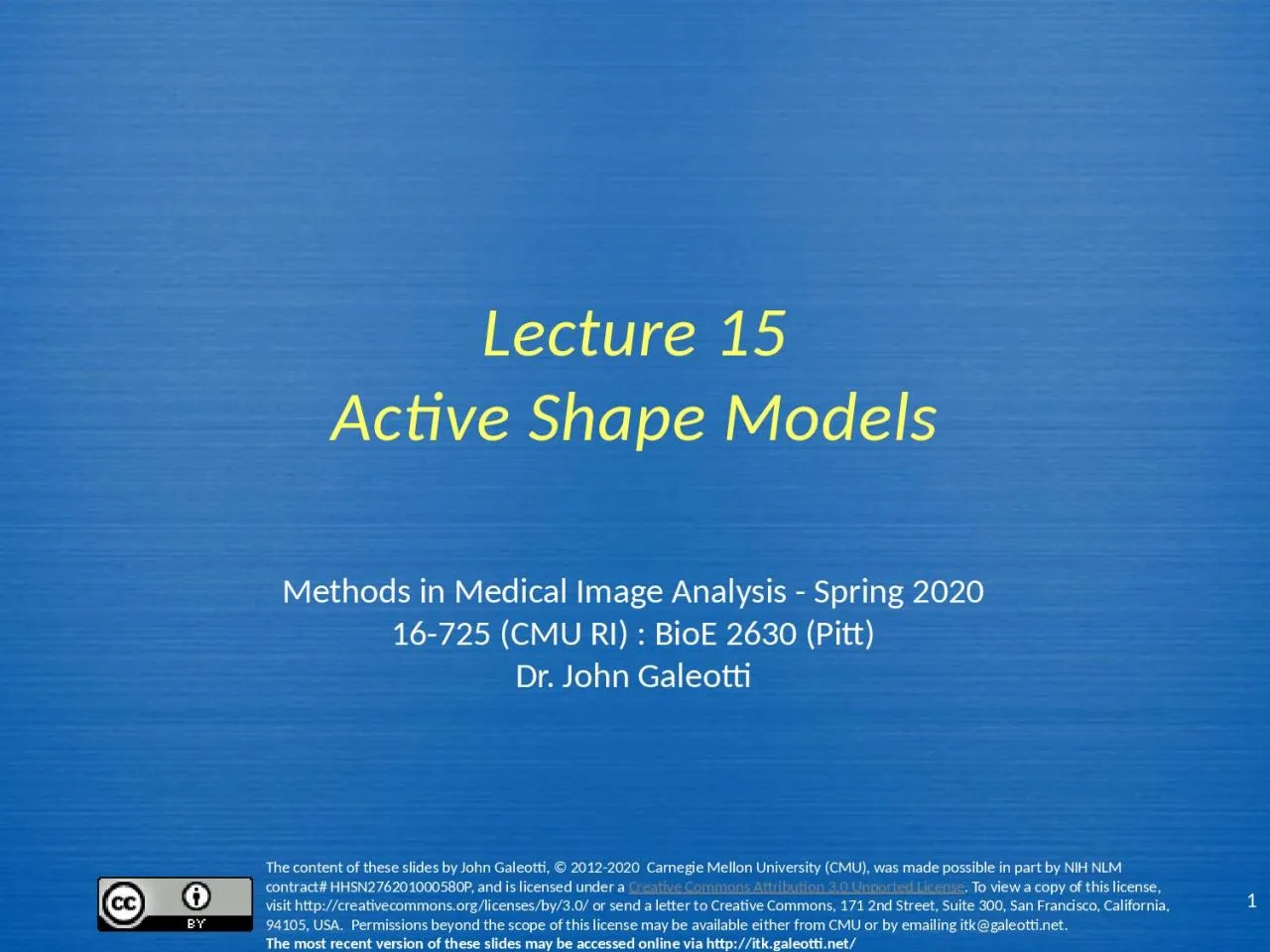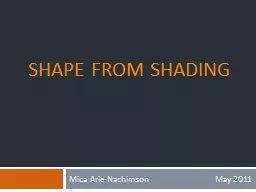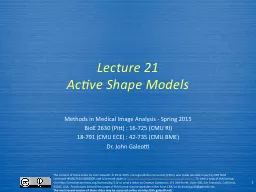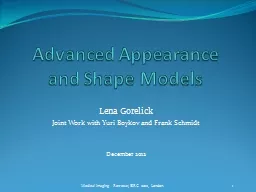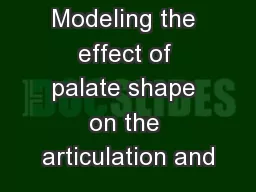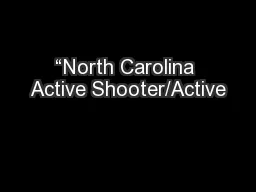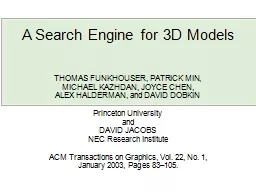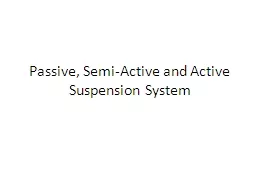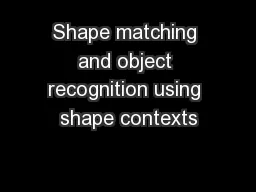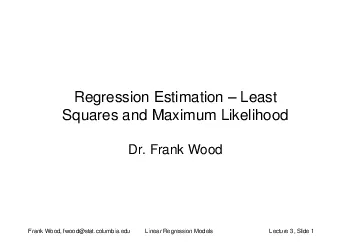PPT-Lecture 15 Active Shape Models
Author : angelina | Published Date : 2022-06-07
1 Active Shape Models ASM amp Active Appearance Models AAM Well cover mostly the original active shape models TF Cootes CJ Taylor DH Cooper J Graham Computer
Presentation Embed Code
Download Presentation
Download Presentation The PPT/PDF document "Lecture 15 Active Shape Models" is the property of its rightful owner. Permission is granted to download and print the materials on this website for personal, non-commercial use only, and to display it on your personal computer provided you do not modify the materials and that you retain all copyright notices contained in the materials. By downloading content from our website, you accept the terms of this agreement.
Lecture 15 Active Shape Models: Transcript
Download Rules Of Document
"Lecture 15 Active Shape Models"The content belongs to its owner. You may download and print it for personal use, without modification, and keep all copyright notices. By downloading, you agree to these terms.
Related Documents

